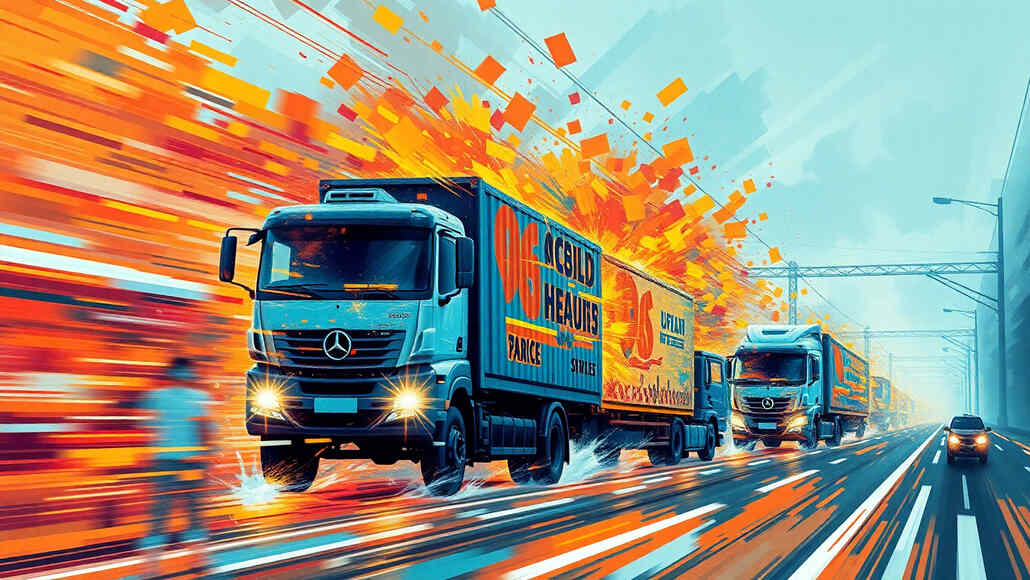The Indian cold chain market has seen notable growth, reaching 1.82 crore in 2022, and is expected to continue expanding, with projections indicating a value of 3.80 crore by 2028, reflecting a compound annual growth rate (CAGR) of 12.3% from 2023 to 2028. This surge is driven by a rising demand for temperature-controlled solutions to support India’s growing consumption of perishable and processed foods, as well as pharmaceuticals. Investing in robust cold chain logistics and post-harvest infrastructure has become critical to both food security and reducing global hunger challenges.
However, India’s current cold storage and transportation capabilities are struggling to keep up with rising demand. This capacity gap in the cold chain market highlights several pressing challenges, including infrastructure limitations, financial constraints, and a shortage of skilled workers.
Key Challenges in India’s Cold Chain Market
Inadequate Cold Chain Infrastructure
India faces a significant shortfall in cold storage infrastructure, which hampers the ability to keep pace with demand for perishable goods. Driven by increased consumer demand for fresh and processed foods, alongside the rise of e-commerce, the need for cold chain solutions has become paramount. Yet, cold storage facilities are heavily concentrated in northern India, creating an imbalance across the nation and limiting access for producers in other regions. Furthermore, specialized transport units, such as refrigerated trucks and containers, are scarce, adding a cost burden to companies seeking to acquire and operate temperature-controlled fleets.
Frequent power shortages further hinder the cold chain market by disrupting temperature control, resulting in spoilage and product losses. For instance, the perishable food industry requires stable cold chain conditions to maintain freshness, while the pharmaceutical sector relies on precise temperature control to preserve the efficacy of products. Addressing these infrastructure gaps is crucial for supporting demand growth in these key sectors.
Financial Constraints
Establishing and maintaining effective cold chain logistics is capital-intensive, and this financial burden often deters industry stakeholders from expanding or upgrading their facilities. Meeting industry standards and adhering to global compliance protocols require significant investment, but without such improvements, businesses struggle to stay competitive. A comprehensive approach that includes funding from both public and private sectors is essential to bridge this gap and support the growth of India’s cold chain market.
Skilled Workforce Shortage
Operating a modern cold chain system demands specialized knowledge and skills, particularly in handling perishable goods. Currently, there is a notable shortage of trained workers in India who understand the complexities of cold chain management. Inadequate training can lead to mishandling, increasing the risk of spoilage before products reach consumers. Upskilling and reskilling initiatives, led by both the government and private sector, are needed to build a skilled workforce capable of meeting the demands of an expanding cold chain market.
Government Initiatives Supporting Cold Chain Growth
Recognizing the importance of a robust cold chain market, the Indian government has introduced several initiatives aimed at expanding and modernizing cold storage and logistics infrastructure.
Pradhan Mantri Kisan Sampada Yojana (PMKSY):
Launched in 2017, the Pradhan Mantri Kisan Sampada Yojana is designed to modernize India’s food processing industry, with a focus on creating a seamless cold chain logistics network. With an investment of ₹4,600 crore, PMKSY supports the development of integrated cold chain and value addition infrastructure for both horticultural and non-horticultural produce. By establishing end-to-end cold chain solutions, the initiative promotes efficient storage, transportation, and initial processing of agricultural products, ensuring that goods are kept fresh from farm to consumer.
Under the PMKSY, India has achieved a cold storage capacity of 8.38 lakh MT as of December 31, 2022. The scheme has approved 39 Mega Food Parks and 298 Integrated Cold Chain projects, with an aim to create 5,44,432 direct and indirect jobs and support nearly 28,49,945 farmers by 2026. The program also provides capital cost support, covering up to 35% for projects in general areas with capacities between 5,000 and 10,000 MT, and 50% for projects in the Northeast, hilly, and scheduled areas.
By developing a strong cold chain market, India is not only enhancing food security but also driving rural economic growth by boosting farmers’ incomes and generating employment opportunities.
Trends Shaping the Indian Cold Chain Market
As the cold chain market in India matures, several trends are emerging, driven by technological advancements and changing consumer demands:
Increased Transparency Through IoT Integration
One of the most transformative changes in cold chain logistics has been the adoption of Internet of Things (IoT) technology, which offers real-time tracking and enhanced visibility throughout the supply chain. Advanced monitoring systems minimize spoilage and ensure regulatory compliance by providing continuous data on temperature and humidity levels. This transparency not only reduces waste but also builds consumer confidence in the quality and safety of temperature-sensitive goods.
Predictive Maintenance
Data analytics and artificial intelligence (AI) are enabling predictive maintenance in cold chain logistics. By using algorithms to analyze equipment performance, companies can anticipate potential breakdowns and conduct timely maintenance, thus reducing downtime and operational costs. Predictive maintenance is particularly valuable in avoiding equipment failure during peak demand seasons, ensuring reliable cold storage and transportation services.
Cold Chain Integration in Last-Mile Delivery
The e-commerce boom has driven demand for last-mile delivery solutions within the cold chain market, especially for sectors like pharmaceuticals and frozen food. Companies are investing in electric cooling vehicles and mobile temperature control units to meet customer expectations for timely, temperature-controlled deliveries. By prioritizing last-mile cold chain integration, businesses can differentiate themselves and gain a competitive edge in an increasingly dynamic market.
Increased Regulatory Compliance
With the introduction of stricter regulations on food safety and drug quality, compliance has become a priority for stakeholders in the cold chain market. New regulations require enhanced traceability, prompting investments in end-to-end visibility technologies that document every step of a product’s journey. This commitment to compliance reinforces the market’s emphasis on quality and safety, ensuring that Indian exports meet international standards.
The Future of Cold Chain Logistics in India
The Indian cold chain market is poised for robust growth, driven by rising demand for temperature-sensitive goods, government initiatives, and technological innovation. Addressing the current challenges of infrastructure gaps, financial constraints, and workforce shortages will be crucial to unlocking the full potential of cold chain logistics in India.
The government’s continued support through initiatives like the Pradhan Mantri Kisan Sampada Yojana and other policy frameworks will help create an environment conducive to growth. Furthermore, as the industry embraces new trends, such as IoT-enabled transparency, predictive maintenance, and sustainable last-mile solutions, the cold chain market is expected to become more resilient and efficient.
Ultimately, the evolution of cold chain logistics in India holds the promise of enhancing food security, ensuring safe medical supply chains, and creating economic opportunities across the country. As infrastructure improves and technology continues to advance, the cold chain market in India will play an increasingly vital role in supporting a wide range of industries, from agriculture to pharmaceuticals, and in connecting India to global markets.































